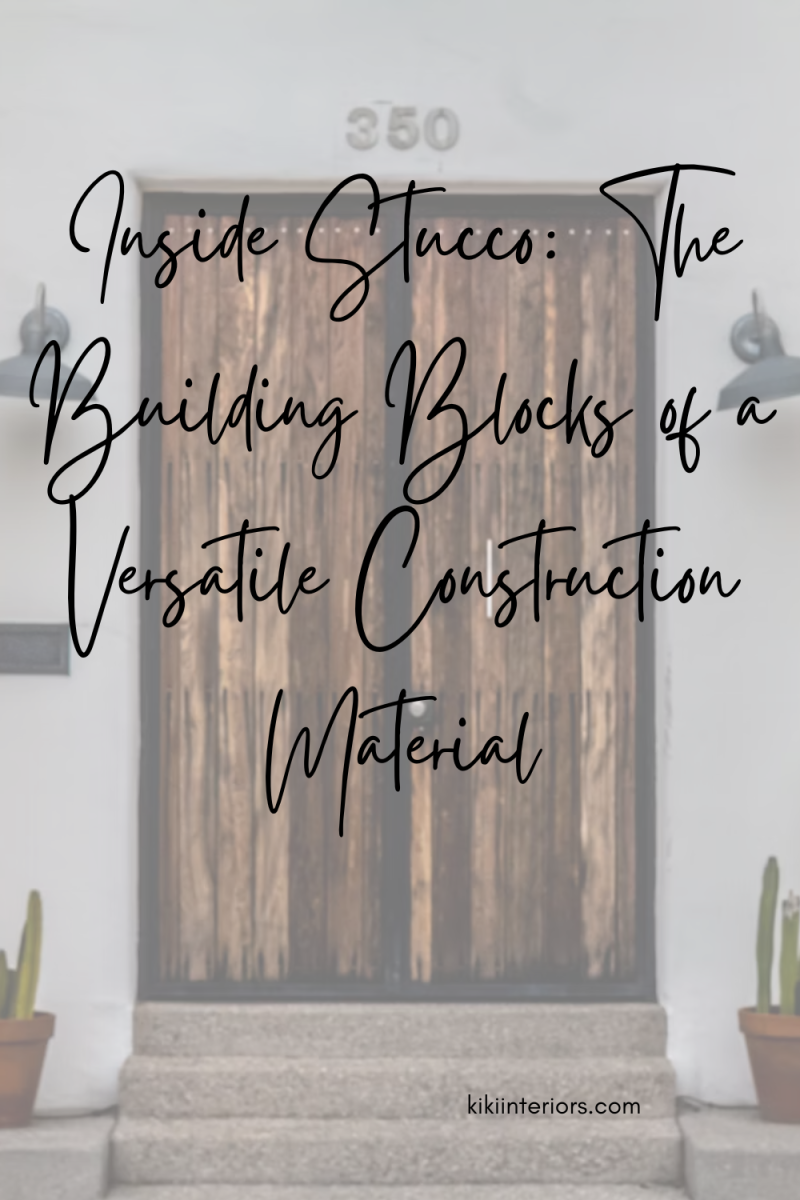Inside Stucco: The Building Blocks of a Versatile Construction Material

When it comes to building a new home, renovating an old one, or just doing general repairs around the house, having a deep understanding of what is stucco made of and what designs are available to you is essential. This can help you pick the best one for your project.
Stucco is a great option for many building projects and, depending on where you live, could be a great and low-maintenance exterior for your home. It is an aesthetically pleasing, energy-efficient, and versatile material used for exterior or interior walls, ceilings, and floors.
Here’s a guide that explains everything you need to know about stucco.
What Is Stucco Made Of?
Stucco is primarily composed of three key ingredients: cement, sand, and water. Cement acts as the binding agent, holding the mixture together. It is typically made from Portland cement, lime, and water.
Sand provides the bulk and texture to the stucco, and the type of sand used can influence the final appearance of the finished product. While water is gradually added to the mix to activate the cement and allow for proper application.

The Role of Additives
To enhance certain properties of stucco, there are additives in the mix. These additives can improve workability, strength, and resistance to cracking making it stronger than cement.
Fiberglass mesh or synthetic fibers are sometimes added to reinforce the stucco, making it more resistant to structural stress. Additionally, pigments or dyes can be introduced to give a stucco wall a specific color, eliminating the need for paint.
The Application Process:
Applying stucco requires skill and expertise, which is why many homeowners rely on professional stucco contractors for the job. These contractors have the knowledge and experience to ensure a proper stucco application that will stand the test of time. The process typically involves the following steps:
Surface Preparation
The surface must be thoroughly cleaned by removing any dirt, loose materials, or contaminants. In some cases, a wire mesh may be attached to provide extra support.
Mixing the Stucco
Carefully mix the cement, sand, and water in precise proportions to achieve the desired consistency. Additives and pigments may also be at this stage.
Applying the Scratch Coat
Apply the first layer, known as the scratch coat to the prepared surface using a trowel. This layer creates a rough surface for the subsequent layers to adhere to.
Adding the Brown Coat
The brown coat is applied once the scratch coat has been partially cured. This layer is smoother and provides a solid base for the final finish coat.
Applying the Finish Coat
The finish coat is the visible layer of the stucco exterior that gives the desired texture and appearance. Skillfully apply and texture this layer, using various techniques such as troweling, brushing, or spraying.

Benefits of Stucco
Stucco offers many advantages that contribute to its popularity as a construction material. It provides excellent durability and longevity to withstand the elements and resist fire and pests. The natural ability to breathe allows moisture to escape, preventing mold and rot.
It is also low-maintenance, requiring minimal upkeep over time. Its versatility allows for various finishes and architectural styles for both residential and commercial projects.
Know More About Stucco
To conclude, stucco is a durable, aesthetically pleasing, and cost-effective solution for many construction projects. Knowing what is stucco made of makes it more ideal material for many different uses. Contact a professional stucco contractor today and make any of your visions come to life.
For more articles on construction and remodeling, check out the rest of our blog now.




